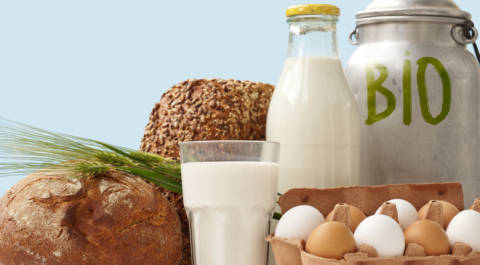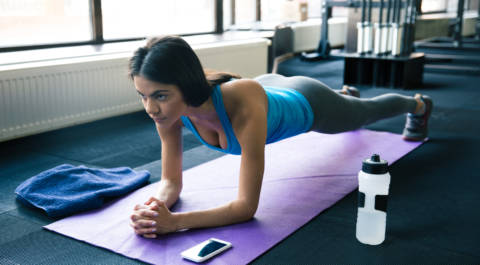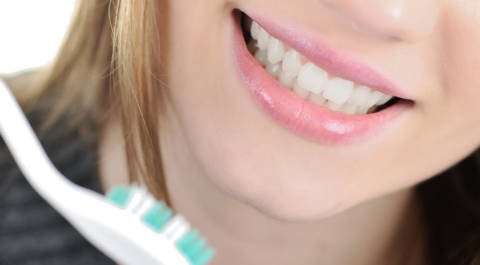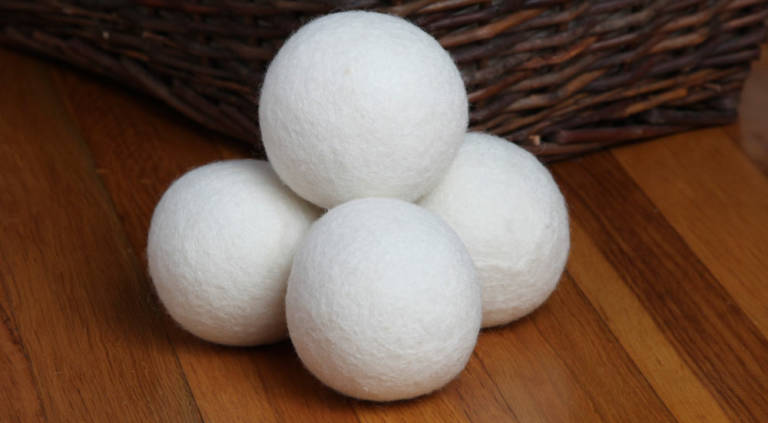
Dryer balls aren't as odd as they sound: they're balls made of different materials that are becoming incredibly popular in eco-friendly homes. These balls are hypoallergenic, non-toxic, save energy and are affordable, especially if you're into DIY and willing to make them yourself.
Like Organic Soul on Facebook
If you're wondering what's wrong with your current fabric softener and why dryer balls are the better solution, keep reading to learn more about this cost-effective and natural dryer addition.
Conventional fabric softeners, unfortunately, are packed full of toxic chemicals. Some common ingredients include:
- Methylisothiazolinone: According to the Campaign for Safe Cosmetics, Methylisothiazolinone can foster allergies, be toxic when inhaled and may be a neurotoxin.
- Quaternary ammonium cations (Quats): Quats, says Chemical of the Day, can cause respiratory and skin irritation, are endocrine disruptors and are very toxic to marine life.
- Cetrimonium Chloride: This chemical may be a hazard to skin and foster allergies, and it’s also a suspected environmental toxin.
- Fragrance: Fabric softener fragrances can pose a whole host of hazards, depending on which type is used. As noted by the Huffington Post, synthetic fragrances come from a variety of chemicals, ranging from known allergens to potential carcinogens.
- Alcohol ethoxylates: These surfactants may cause or contribute to asthma and other respiratory issues, irritate skin and foster allergies and are a potential carcinogen, per EWG’s Skin Deep Cosmetics Database.
How Dryer Balls Work
Dryer balls work by keeping the clothes circulating and separated. This action allows the dryer's hot air to better dry the clothes, saving on energy costs. They also bounce around in the dryer, naturally fluffing and softening everything inside.
If you do buy them instead of making them yourself, you will notice many brands come in packs of two or three. However, since a ball or two is likely to get stuck in a pocket or sleeve, using six at one time usually gives you the full effect.
Generally, these balls can be used with just about any types of clothing fabrics. And, unlike white vinegar—another natural dryer aid—you won't have to remember to add them in at the rinse cycle, as the balls can be put right in before you start up that load.
Fabric Versus Rubber And Plastic
You've probably already seen plastic or rubber dryer balls on the market or have heard about people using tennis balls as a fabric softening alternative. While these may work, they are made of synthetic materials that are safe at lower temperatures but will release harmful chemicals once heated.
This residue deposits on your sheets, clothes and into your dryer and its parts. The result is a reduction in your dryer's lifetime and the creation of layers of harmful particles that will become part of your next load.
Things To Know
If your clothes are coming out full of static with dryer balls, you may be over-drying the load. Since these balls will cut your drying time, you will have to adjust until you find the right setting.
- Dryer balls will actually help pull off pet hair by virtue of their action, so if you have pets, it’s just a bonus. The wool or other fabric of the balls themselves should not shed onto your clothing if properly made.
- Unlike rubber or plastic dryer balls, wool or fabric ones don’t make much noise as they are moving around the dryer.
- While most fabric dryer balls are completely free of chemicals, you still can consider the source. Wool, for example, may or may not be organic, depending on the brand.
- You can add essential oils to the dryer balls if you’d like some natural odor neutralization, but you probably won’t smell the oil after the clothes dry, since the heat will make the oil molecules evaporate. If you do add oil, don’t overdo it, as you can end up with oil marks on your clothes.
- A dryer ball’s lifetime depends on the material used and its quality. A well-made wool dryer ball, for instance, can last for around 1,000 loads, which for most people is around two to five years. Over time, piling will form on the balls, and this actually makes them more effective by increasing their surface area. It’s time to get new balls once you notice a significant decrease in the ball’s size.
- You can buy ready-made dryer balls or make your own by checking out tutorials online. If you do decide to buy them, make sure you go with a reputable manufacturer.
DIY Dryer Balls
If buying the dryer balls just isn't appealing to you, try your hand at making your own!
What You Need
- 100 percent wool yarn. Avoid wool that is labeled as machine washable or superwash, as these won't work correctly.
- Pantyhose
- Scissors
- A crochet hook or needle with a blunt tip
- Cotton yarn or string
Wrap the wool around your first two fingers about ten times. Next, pinch the yarn bundle in the middle and pull it off your fingers, and wrap more yarn around this bundle's middle. Keep wrapping wool around the bundle until you have the beginnings of a ball.
Keep on wrapping tightly until the ball is the size you want. Some people make about the size of a softball to cut down drying time, but if you want to save on the yarn, go with the size of a tennis ball. Once you have the desired size, use your crochet hook or blunt needle to tuck the loose thread's end under several yarn layers. Then, pull that end through and cut its end. Repeat these steps until you've made four to six yarn balls.
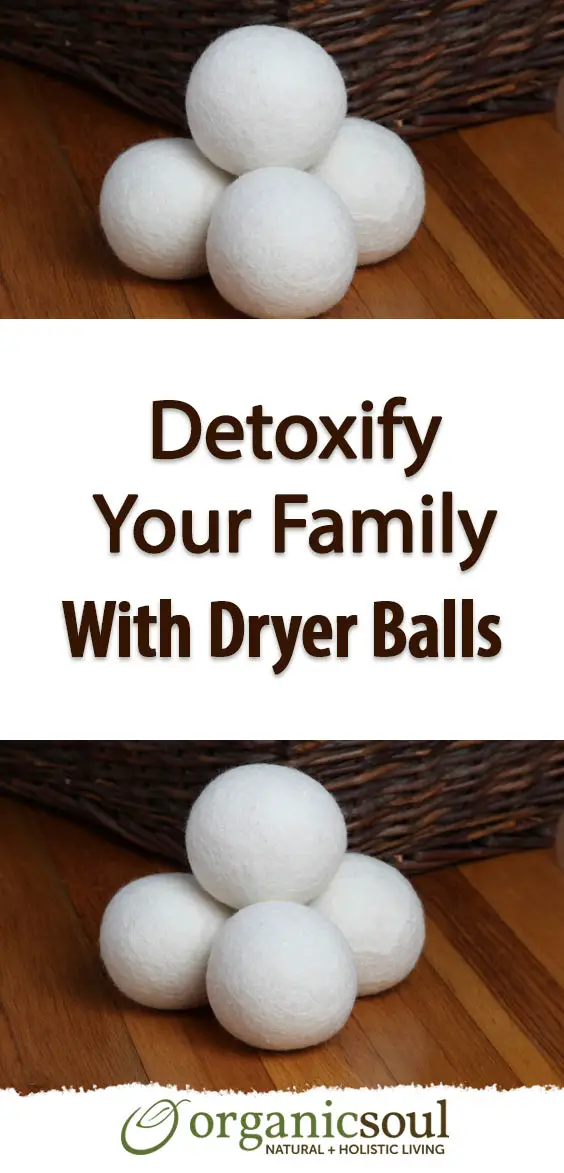 Take your pantyhose and cut one leg off. Put the balls into the pantyhose's toe, using your cotton yarn or string to tie tightly in-between each ball. Once you're done, tie off the end. What you'll end up with is a yarn caterpillar!
Take your pantyhose and cut one leg off. Put the balls into the pantyhose's toe, using your cotton yarn or string to tie tightly in-between each ball. Once you're done, tie off the end. What you'll end up with is a yarn caterpillar!
The next step is getting your yarn balls to felt so they work properly. Put the caterpillar in with a load of towels in your washer, and wash the load in a hot wash cycle with a cold rinse cycle. Dry the caterpillar with the towels on your dryer's hottest setting.
Once the load is dry, take the balls out of the pantyhose and check for felting. If your balls don't felt correctly, you may need to repeat the washing and drying process again. Felting has occurred when you can gently scrape your nail over the wool balls and the strands don't separate.
Whether you buy dryer balls or make your own, you will have the satisfaction of dry, soft clothes without all the chemicals. Make the change today and try some dryer balls for an effective and eco-friendly addition to your laundry routine.


